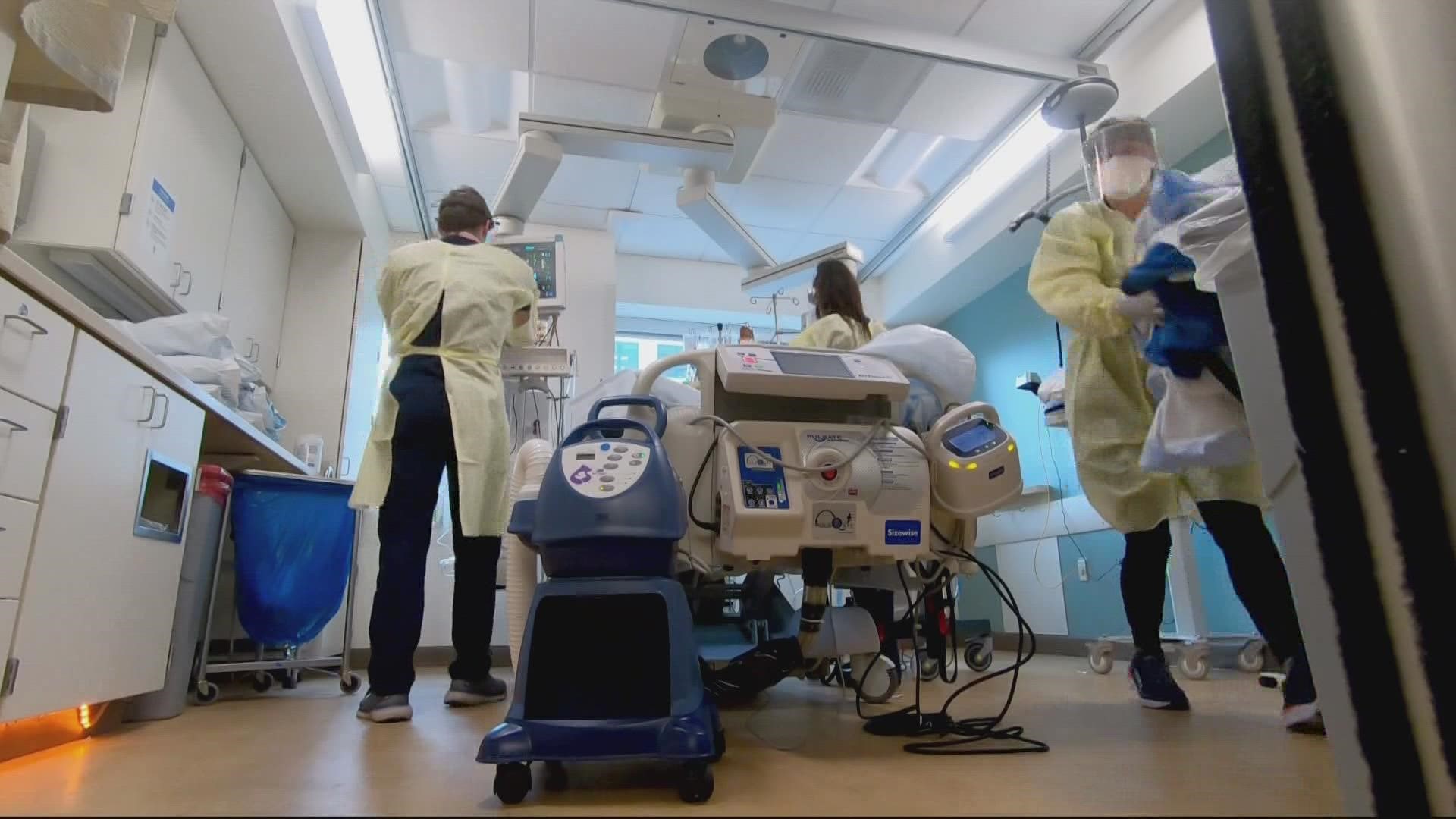PORTLAND, Ore. — Despite predictions of a mid-month plateau, Oregon continued to see COVID-19 cases and hospitalizations rise through the end of June.
On June 3, Oregon's chief forecaster released his report that forecast the latest COVID surge would top out on June 14. Since then, numbers have kept on going up.
Hospitalizations haven't stopped climbing since June 19, when there were 287 patients with COVID in Oregon.
The last three days have been especially steep, with hospitalizations rising from 357 on Monday to 402 on Wednesday.
Earlier this month, Dr. Peter Graven, director of Oregon Health & Science University's Office of Advanced Analytics, said he expected the current COVID surge, fueled primarily by the BA.2 subvariant, to peak mid-June with 329 hospitalizations.
Dr. Graven has been often been accurate in the past, but the highly transmissible variants and subvariants of COVID, along with other factors, makes predictions more difficult.
The good news is that despite cases and hospitalizations increasing, deaths related to COVID have flattened out.
This summer has been far less grim compared to the delta variant and original omicron variant, which led to over 1,000 people hospitalized with COVID on a given day.
Washington state has also seen increases in COVID this month, although cases have not surged there like they have in Oregon the past few days.
During a Zoom call on Wednesday, Washington health officials did say hospitals were stressed due to a combination of COVID, a late flu season and staffing shortages.
“Please do what you can to protect yourself and your family and our health care system,” said Lacy Fehrenbach with the Washington State Department of Health.
In both states, health officials are not letting their guard down, as BA.2 and other subvariants continue to spread illness.
RELATED: FDA panel recommends updating COVID booster shots to fight variants this fall
It's worth noting that most people who are vaccinated and don't have underlying health issues are surviving COVID infection, regardless of which subvariant they contract.
“From a clinical perspective, we're not seeing huge differences in disease," said Fehrenbach. "What we have noticed and are dealing with is that each of these subvariants is more transmissible."
Health experts say vaccinations and boosters are still key to staying safe.
Graven with OHSU said he will release a new forecast Friday on what he expects in July.

